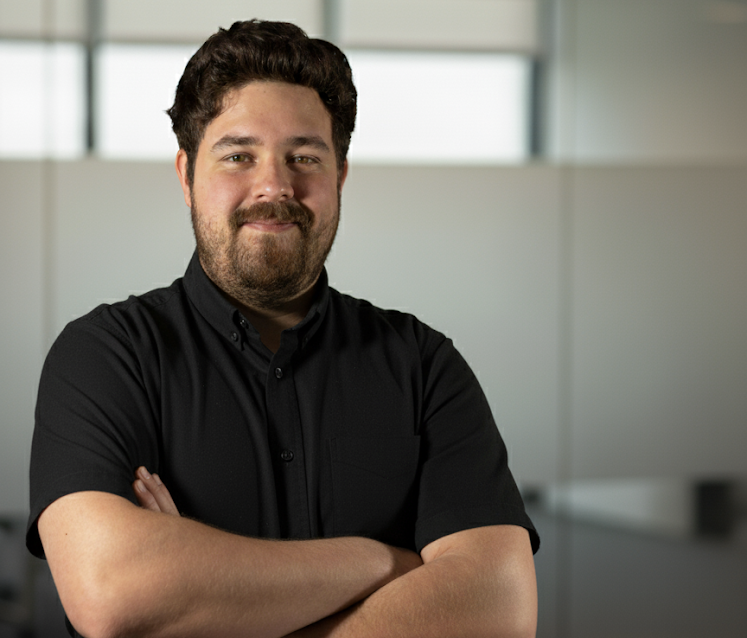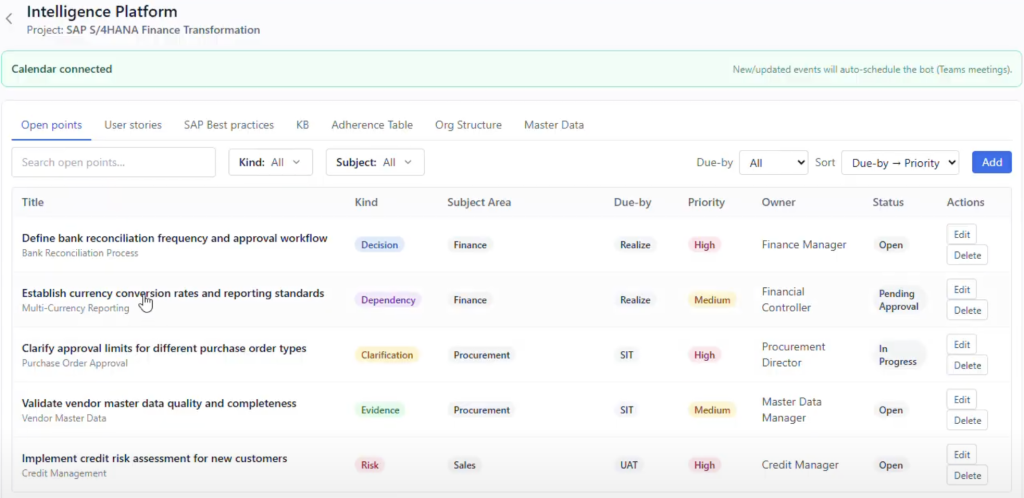In this exclusive ERP News interview, Luzid’s CEO, Andrés Carranza, explains how agentic AI can eliminate implementation inefficiencies, accelerate project timelines, and ensure better alignment between business needs and technology delivery.

Q: Enterprise software implementations have been notoriously painful for decades. What made you and your co-founder Matheus, decide to tackle this problem?
Andrés: You are right. According to Gartner, more than 75% of software implementation projects run over budget or over time—and many executives have told us they’ve never seen an implementation finish on schedule.
Matheus and I met at Stanford and we both come from an AI research and engineering background. I was a researcher at NASA during High School and the youngest quant trader at Two Sigma, and Matheus worked at Meta AI and was a founding engineer at Orby AI. Back in 2023, when we were working with companies that started adopting AI agents for back-office automation like Google and Uber, we kept hitting the same barrier: the problem wasn’t the capability of the AI models, it was the lack of clearly defined business processes. Without the right context, no agent can make decisions autonomously. Every time we deployed one, we had to assemble a “consulting squad” to map processes before the agent could do anything useful.
That pain mirrors exactly what system integrators and end customers face in Enterprise Software implementations: the hardest part is getting the right context from key business users and making sure this is well documented. We realized that if we solved this problem for the Enterprise Software Implementation market—a massive, global industry that includes ERPs and CRMs—we wouldn’t just make implementations faster and lower risk, we’d also create the foundation for companies to continuously map and update their processes. And that, in turn, accelerates the adoption of new software including AI agents across the enterprise—our long-term vision.
Q: Can you break down what “David” actually does? How is this different from existing automation tools?
Andrés: David is not an automation tool—it’s a copilot for software implementations. While automation tools handle isolated tasks, David captures and structures the entire context of a project from end to end.
We describe David’s capabilities in three pillars:
- Workshop Intelligence – listens into workshops, prompts consultants with best-practice questions in real time, and ensures no requirements or decisions are lost.
- Project Intelligence – monitors scope, change requests, and best practices continuously, surfacing issues before they turn into rework.
- Testing Intelligence – auto-generates and maintains test scripts, manuals, and evidence so testing is faster, cheaper, and always traceable.
Just as important, we’re building different versions of David for each software. Every platform has its own methodology and culture, and user adoption is everything—there’s no point in piling on features if consultants don’t use them daily. For SAP, David aligns with the Activate methodology and integrates directly into Cloud ALM, so it feels like a native SAP tool. For Salesforce, the copilot looks different: it follows Salesforce’s ALM lifecycle and connects with DevOps Center to track work items, pipelines, and environments.
The result is a copilot that doesn’t force consultants to change habits but instead works the way their ecosystem already works.

Q: Can you provide us with real examples of the significant improvements you claim to have achieved based on your work with your current customers, such as Numen?
Andrés: With Numen and other customers, consultants using David have reported up to a 90% acceleration in designing business blueprints. Normally, these documents take weeks because information is scattered across workshop recordings, notes, and pre-sales materials. David changes that by generating a first draft instantly, consolidating all that context into a structured blueprint. Consultants can then refine it with a chatbot trained on the project’s own meetings and documents, asking it to validate details or review specific sections.
For Vivo consulting, we saw significant impact in the testing phase. David can cut test script creation time by around 70%, which often shortens the overall testing cycle by one to two weeks. That’s a huge win in enterprise software projects, where testing is usually one of the biggest bottlenecks.
Q: Testing seems to be a major focus. Why is that such a pain point in implementations?
Andrés: There are 3 big pains in software implementation testing:
- It’s hard to decide what to test: every company has unique processes and customizations, so covering everything is inefficient.
- Automation tools tend to break or require heavy maintenance (especially around test data), eroding ROI.
- Gaps in requirement capture and handoffs mean tests often miss what users actually need—leading to rework and delays.
David generates test scripts directly from user session recordings. Instead of consultants manually documenting every interaction step by step, David captures the process as it happens and converts it into structured scripts. This dramatically reduces the time and effort needed to prepare test cases and ensures they reflect how users actually work.
David also analyzes execution results automatically. Traditionally, consultants have to sit side by side with key users during testing to confirm that each step is executed correctly. With David, this validation happens in the background—errors are flagged, results are logged, and evidence is captured without slowing down the project team.
Finally, David connects back to all workshops and customer meetings. It cross-checks the requirements captured during discovery and design against the generated test scripts, validating that coverage is complete. This ensures that nothing important gets left out and that the testing phase directly reflects what users said they needed.
Q: How does David handle scope creep, which seems to be the bane of every implementation project?
Andrés: Scope creep is one of the biggest pain points of enterprise software implementation projects. It happens when new requirements, change requests, or “nice-to-have” features slip into the project after the contract is signed. Sometimes it’s because customers realize in workshops that they want more than they originally asked for; sometimes it’s because consultants underestimate how complex a process really is. Left unmanaged, scope creep causes timelines to explode, budgets to spiral, and trust between the customer and the integrator to break down.
David tackles this head-on. After every workshop or customer meeting, David produces an analysis that highlights whether any of the topics discussed fall outside the original scope of the proposal. That gives consultants a chance to address it right away—either by aligning expectations, capturing it as a change request, or resetting priorities before it snowballs.
On top of that, David provides best-practice recommendations drawn from the software vendor’s methodology (like SAP Activate) and from similar projects that the partner has already delivered. This ensures consultants aren’t just reacting to scope creep, but proactively steering the project toward proven patterns and avoiding pitfalls others have already faced.
The result is tighter control over delivery, fewer unpleasant surprises for the customer, and a smoother path to go-live.
Q: Are you planning to expand beyond SAP and Salesforce?
Andrés: Yes. Our customers don’t just run SAP or Salesforce—they run dozens of interconnected systems across finance, HR, supply chain, CRM, and beyond. We started with these two softwares because they have the most complex implementations and they touch multiple different business processes. The real challenge is that implementations rarely happen in isolation; every new system has to integrate with what’s already there.
Our long-term vision is to make David a universal copilot for enterprise software implementations. That means helping companies keep track of all their integrations and ensuring that the knowledge captured in one project carries over to the next. Whether it’s SAP, Salesforce, or another platform, the goal is the same: make implementation feel less like a painful, one-off project and more like a seamless software update.
Q: What would success look like for Luzid?
Andrés: For us, success means that software implementations stop feeling like “projects” and start feeling like simple software updates—something you can do in minutes, the same way you update your phone. To get there, companies need their internal processes mapped, structured, and continuously updated—not by AI alone, but by AI working hand-in-hand with human expertise. Consultants remain critical to guiding decisions, and Luzid is building the platform that consulting teams and enterprises will rely on to make that possible.

Andrés D. Carranza Moreno
Co-founder & CEO, Luzid

Andrés is the co-founder and CEO of Luzid, where he leads product vision, strategic direction, and technological innovation. A Stanford dropout driven by a passion for accelerating global technology adoption, Andrés has conducted pioneering research in mechanistic interpretability, time-series forecasting, and cross-domain model robustness.
He contributed to cutting-edge research at leading institutions, including NASA (deep learning for exoplanet discovery), Harvard, MIT, and Two Sigma, where he became the youngest quantitative trader in the firm’s history. His work has been presented at top-tier AI conferences such as ICML and ICLR, and he was a finalist at the International Olympiad in Informatics (IOI).
Combining deep theoretical expertise with pragmatic entrepreneurial vision, Andrés is positioning Luzid at the forefront of AI-driven SAP implementation automation.



